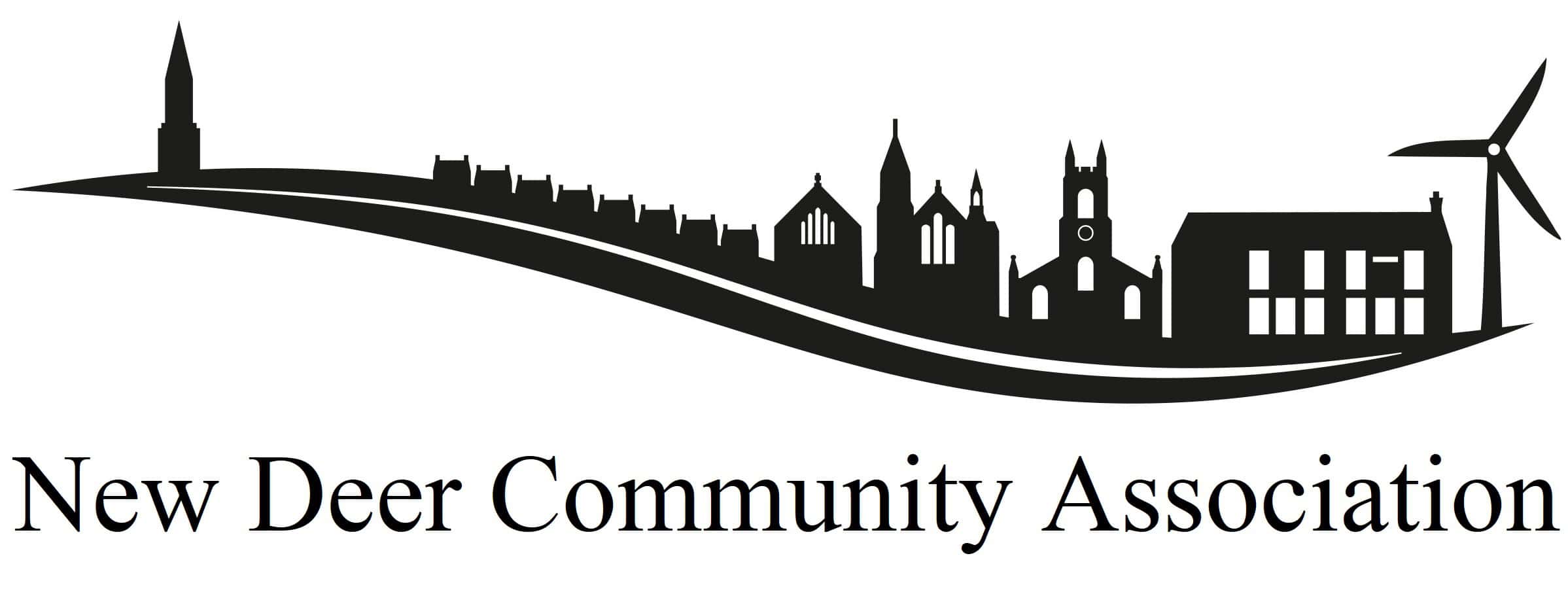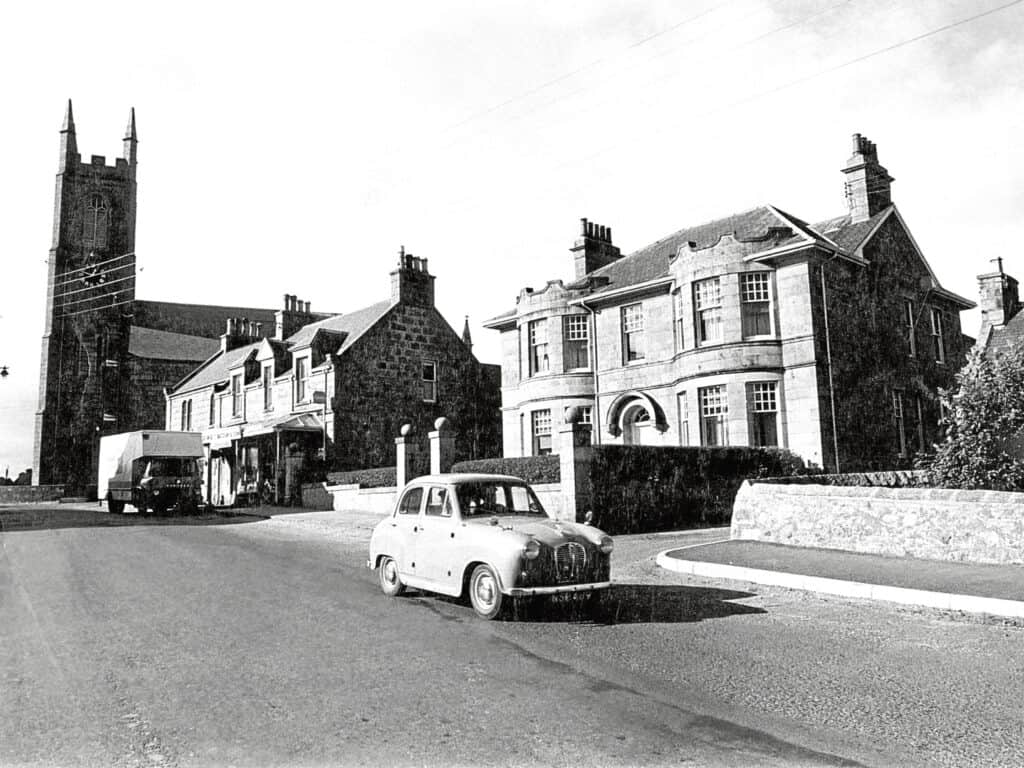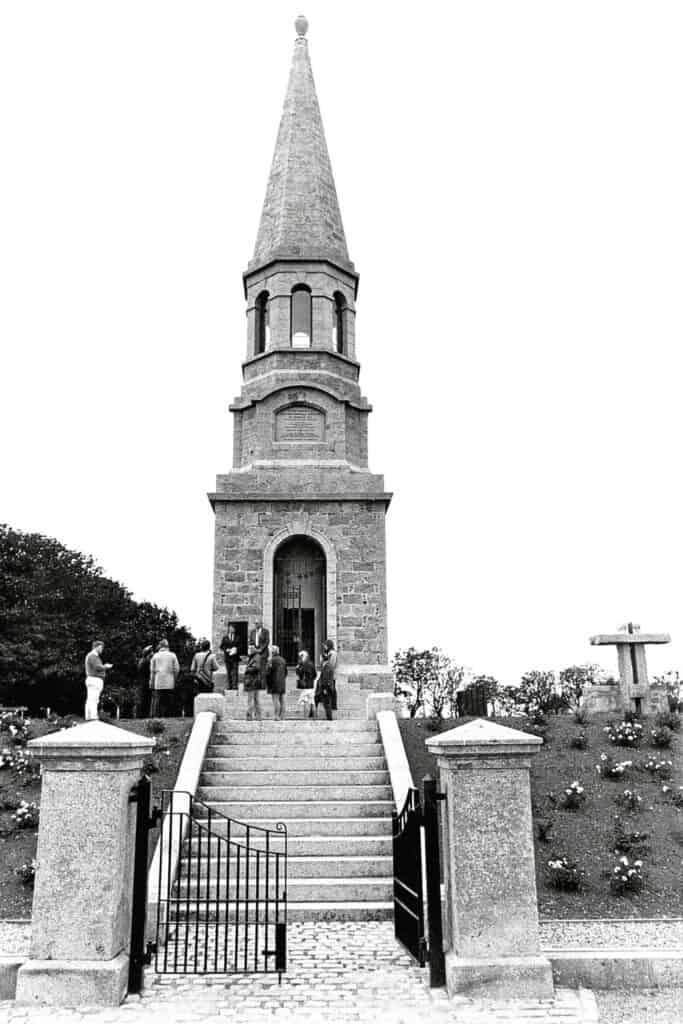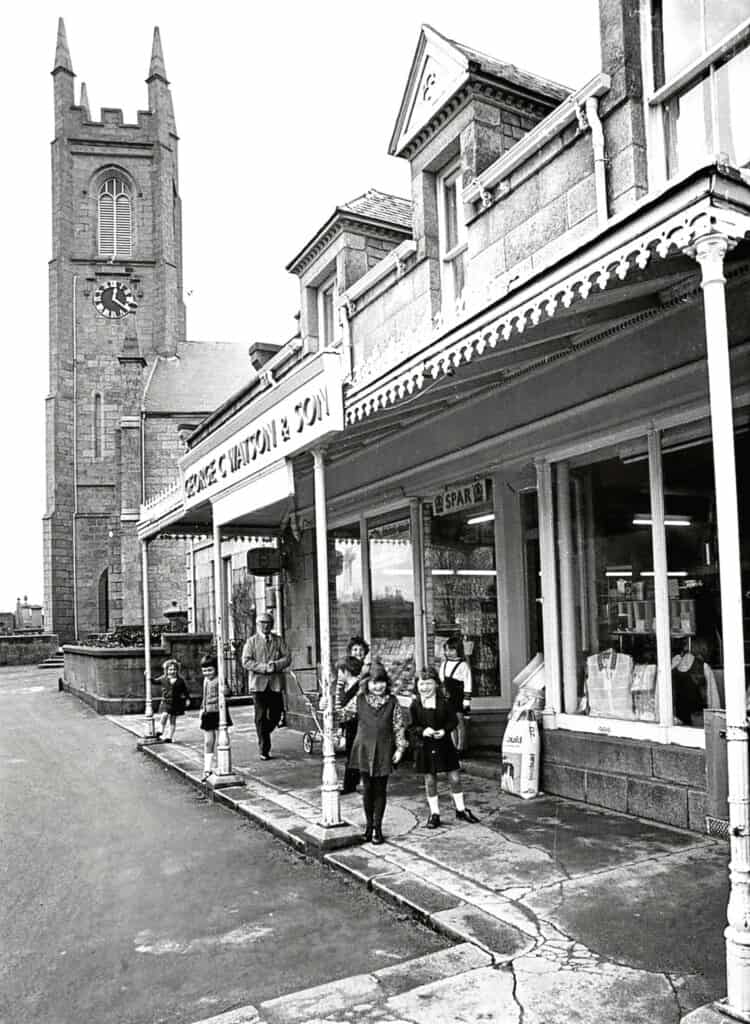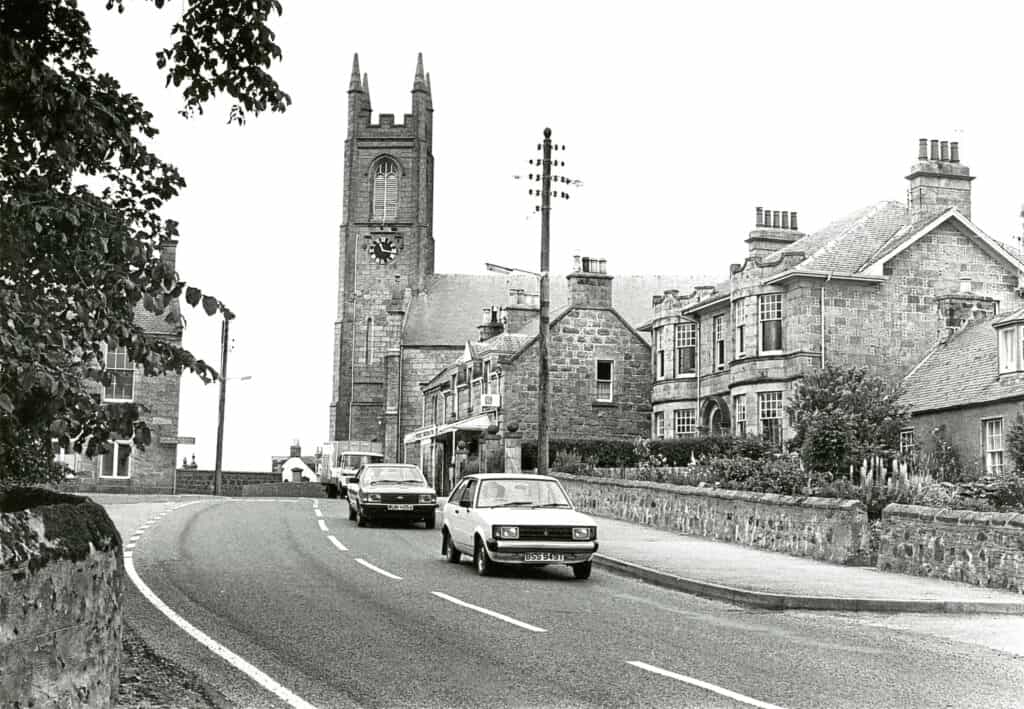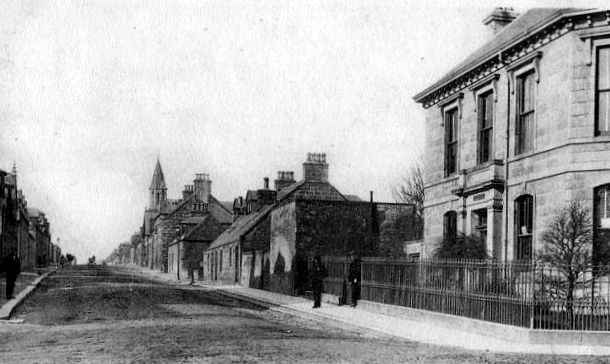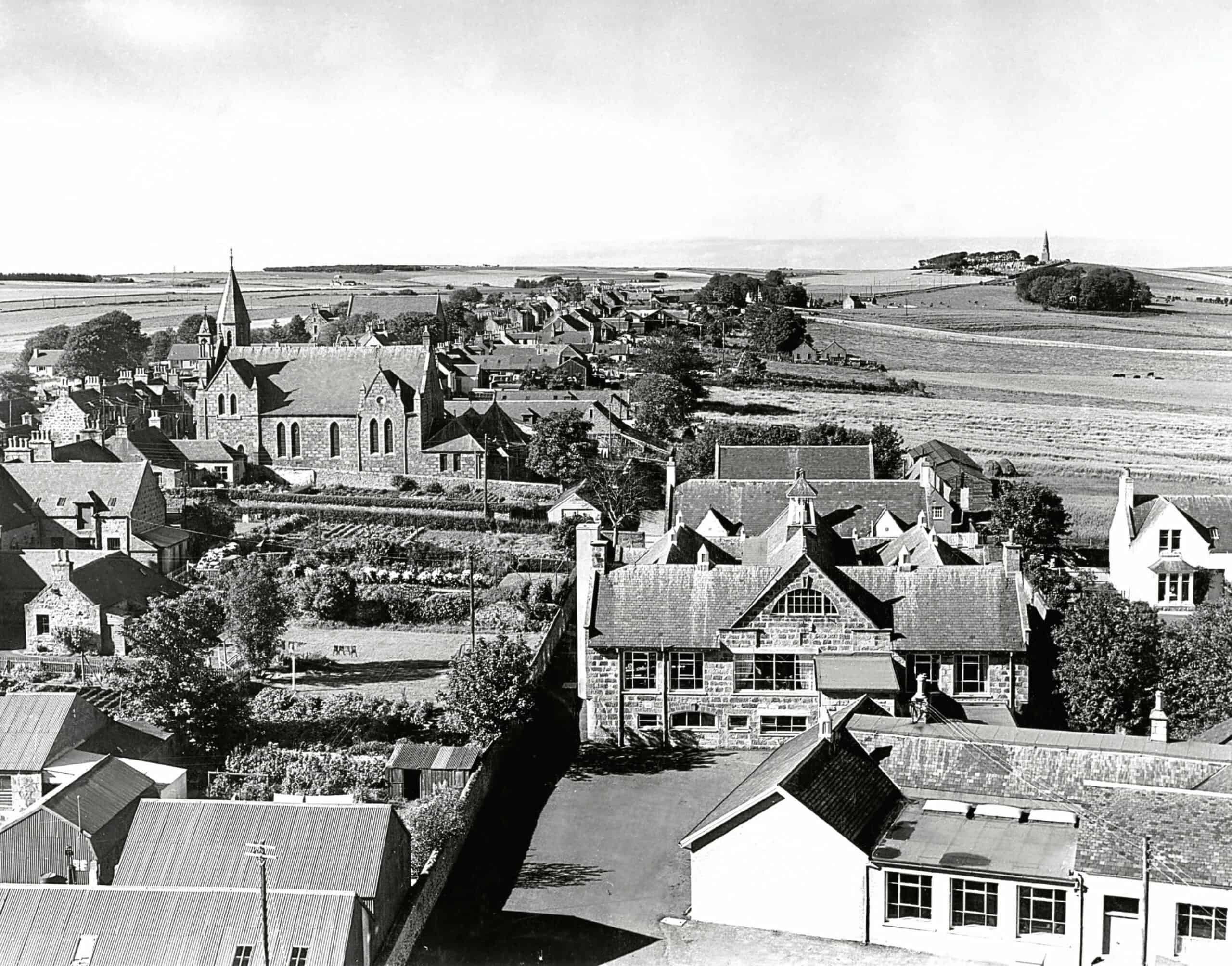
From Auchreddie to New Deer
The story of New Deer begins in the 580’s when St Drostan, a follower of St Columba, set up a monastery at Deer, six miles to the east. Some time later, St Kane left the monastery to establish a chapel at a place that became called Auchreddie, which in Gaelic means “place of the bog myrtle”. Over time, a settlement grew up around the chapel, and it, too, took the name Auchreddie.
In 1219 Deer Abbey was founded by William Comyn, the Earl of Buchan, not far from the site of St Drostan’s earlier monastery. At some time not long afterwards, it seems that the Abbey replaced the earlier chapel in Auchreddie with a new building. In 1503, the Abbey divided the existing single parish into two, with a “new” Parish of Deer (or “Deir”) being carved out of the western half of the existing parish.
What was left became known as Old Deer or Deir. Over the years, “New Deer” came to replace Auchreddie as the village name, though the map continues to show a Mill of Auchreddie on the river a short distance to the east of New Deer.
The remains of castles and various tumuli prove that New Deer was once the scene of military operations. Edward, brother to Robert Bruce, is said to have encamped after the battle of Inverury on a large moor about a mile westward of the village, and thence to have gone in pursuit of the Cumyns to Aikey-Brae, near Old Deer, on which spot a fair has long been kept in commemoration of a battle fought between them.
The old castle of Fedderate, at present in ruins, is believed to have been the retreat of some followers of James II., who, being driven from Fyvie Castle, which they had taken after the battle of Killiecrankie, sought a refuge in this fortress, whence they were expelled by King William’s troops.
